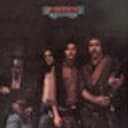Understanding the F Mixolydian Mode
The F Mixolydian scale follows the interval pattern 2-2-1-2-2-1-2 (whole-whole-half-whole-whole-half-whole), producing the notes F, G, A, B♭, C, D, E♭, F. As the fifth mode of B♭ major, it begins on the dominant (fifth) degree of that parent scale, sharing all the same notes but establishing F as the tonal center. The defining feature is the natural seventh (E♭), which would be E natural in F major, creating the signature Mixolydian sound that's simultaneously resolved and open-ended. This single alteration—lowering the seventh by a half step—transforms the conclusive character of F major into the suspended, groove-oriented quality that makes Mixolydian essential for modal playing. The scale naturally contains an F7 chord (F-A-C-E♭), which forms the harmonic foundation of its dominant character.
Why F Mixolydian is Essential for Horn Players and Jazz Musicians
F Mixolydian holds special significance in jazz and brass band music, where F is a comfortable, resonant key for trumpet, saxophone, and other wind instruments. The scale's built-in dominant seventh quality (F7) makes it ideal for bebop lines, blues-influenced jazz solos, and modal jazz explorations pioneered by Miles Davis and John Coltrane. Horn players gravitate toward F Mixolydian because it sits naturally in the instrument's middle register, allowing for fluid technical passages and expressive melodic development. The scale's major third (A) provides brightness and clarity that cuts through ensemble textures, while the flattened seventh (E♭) adds the bluesy edge that defines jazz vocabulary. This balance makes F Mixolydian a cornerstone of jazz improvisation, appearing in countless standards and bebop compositions where dominant seventh harmony drives the music forward.
Chord Progressions and Harmonic Applications
The characteristic F Mixolydian progression is I-♭VII (F major to E♭ major), which immediately establishes the modal sound and creates a powerful, anthemic quality found throughout rock and soul music. Other effective progressions include I-♭VII-IV (F-E♭-B♭), the bluesy I-IV-♭VII pattern (F-B♭-E♭), and more complex modal vamps that incorporate all the diatonic chords available within the scale. The scale works perfectly over F7 chords in jazz contexts, providing natural melodic material for improvisation over dominant harmony. Compared to F Dorian, F Mixolydian has a brighter, more major character due to its major third (A natural instead of A♭), while maintaining similar modal ambiguity through the flattened seventh. This makes it excellent for creating uplifting yet unresolved harmonic progressions that maintain momentum without traditional cadential closure, a technique widely used in funk, soul, and jazz-fusion.
Learning Tips for Piano and Guitar Students
For pianists, begin by playing the B♭ major scale from F to F, which automatically produces F Mixolydian. This parent scale approach helps visualize the modal relationship and understand why F Mixolydian contains two flats (B♭ and E♭). Practice the scale in both hands across two octaves, paying special attention to the E♭ to internalize the flattened seventh sound. Use fingering: right hand 1(F)-2(G)-3(A)-4(B♭)-1(C)-2(D)-3(E♭)-4(F); left hand 5(F)-4(G)-3(A)-2(B♭)-1(C)-3(D)-2(E♭)-1(F). Set a metronome to 60-80 BPM and practice ascending and descending patterns while consciously listening for the dominant seventh quality. Improvise over an F7 chord or a simple F to E♭ progression to develop your ear for the modal character and explore melodic possibilities.
Guitarists can visualize F Mixolydian as F major with a lowered seventh (E natural becomes E♭), or use the fifth position of the B♭ major scale pattern starting from F. Practice the scale in multiple positions across the fretboard to develop comprehensive facility and pattern recognition. The first fret F can serve as a reference point, and incorporating the scale into blues-based licks helps internalize its characteristic sound. Study classic F Mixolydian progressions in soul and R&B music, where the mode creates the signature sound of countless hits. Compare F Mixolydian directly with F Dorian by alternating between the two scales, noting how the single note difference (A vs A♭) dramatically changes the emotional character—this comparison develops your modal awareness and expands your improvisational vocabulary across different tonal colors.
Modal Relationships and Creative Applications
Understanding F Mixolydian's relationships to other modes and scales unlocks creative possibilities for composition and improvisation. While derived from B♭ major, it shares all but one note with F major (E♭ instead of E natural) and sits tonally between major brightness and the darker quality of F Dorian. Modal interchange techniques allow you to borrow chords from parallel modes—mixing F Mixolydian with F Dorian creates sophisticated harmonic movement by alternating between major and minor thirds (A vs A♭), adding chromatic color and emotional depth. Advanced applications include using F Mixolydian as the basis for modal jazz compositions, creating polymodal textures by layering it with other modes, or employing it over non-diatonic chord progressions for passing harmonic color. The scale appears across diverse genres—jazz, funk, soul, rock, blues, and gospel—making it one of the most versatile and practical modes in contemporary music, especially valuable for horn players and keyboard artists seeking sophisticated yet accessible modal colors.





